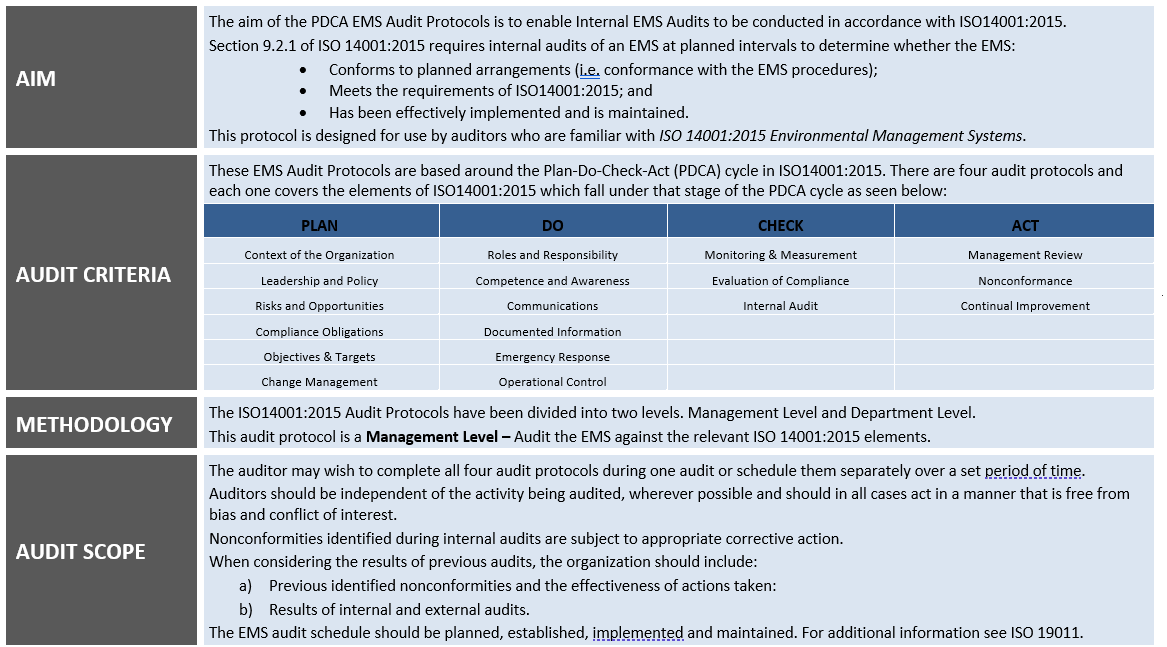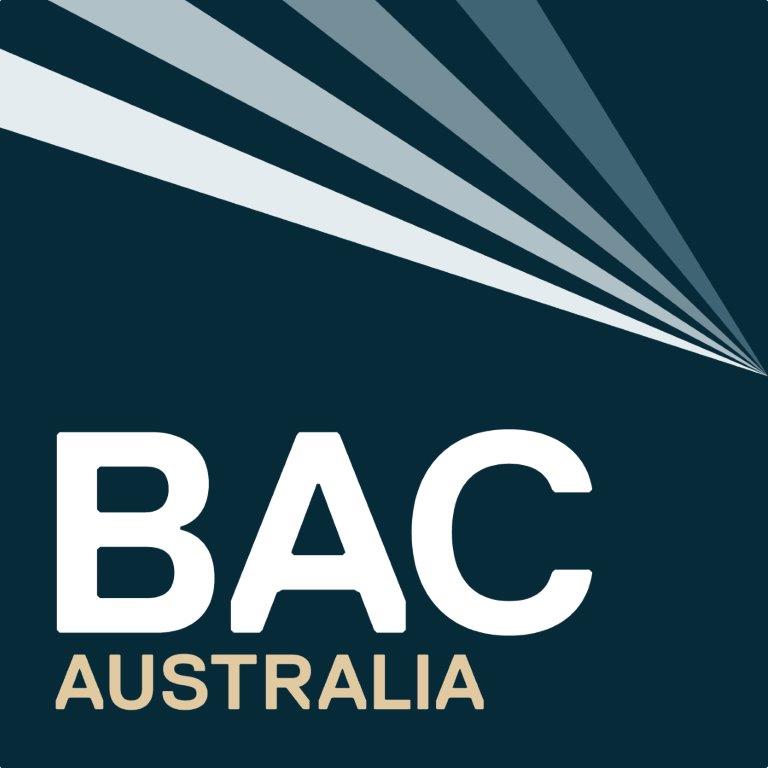Title Page
-
Area(s) Audited
-
Date
-
Lead Auditor
-
Audit Team
-
Scope of Assessment
PROTOCOL 1 – PLAN: USING THE PDCA AUDIT PROTOCOLS – GUIDANCE NOTES
MANAGEMENT LEVEL – CONTEXT OF THE ORGANIZATION
-
1. Has BAC determined the external/internal issues that can potentially affect operational activities?
-
2. Are internal/ external issues monitored and reviewed?
-
3. Has BAC determined the needs and expectations of interested parties?
-
4. Are the needs and expectations of interested parties monitored and reviewed?
-
5. Has BAC documented the scope of its Environmental Management System?
-
6. Have required procedures/processes been identified and mapped against the requirements of the Standard(s)?
MANAGEMENT LEVEL – LEADERSHIP AND POLICY
-
1. Can top management demonstrate involvement in the implementation of the management system?
-
2. Does the organisation have a documented Environmental Policy?
-
3. Does the Environmental policy have a:<br>•Commitment to the protection of the environment<br>•Commitment to prevention of pollution<br>•Commitment to fulfil its compliance obligations<br>•Commitment to continual improvement of the EMS to enhance performance
-
4. Verify that the Environmental Policy is communicated to all persons working for or on behalf of the organisation.
-
5. Does the organisation make the Environmental Policy available to other interested parties e.g. public?
-
6. Is the Environmental Policy periodically reviewed?
MANAGEMENT LEVEL - ENVIRONMENTAL RISKS AND OPPORTUNITIES
-
1. Have risks and opportunities associated with the internal and external issues been identified and assessed?
-
2. Has BAC established and implemented a procedure(s) to identify the environmental aspects/risks of its activities, products or services?
-
3. Are risk controls identified, implemented and evaluated for their effectiveness?
-
4. Has BAC identified and document environmental aspects and potential environmental impacts of operational activities considering a lifecycle perspective?
-
5. Has the adopted risk methodology been published?
-
6. Have significant environmental aspects of BAC been identified and communicated to all personnel?
-
7. Has BAC taken into account the significant environmental aspects in establishing its EMS?
-
8. Are the following items considered in determining the environmental aspects/risks?<br>•Resource Use inc. Energy & Fuel, Water Use and Waste,<br>•Land<br>•Surface and Groundwater,<br>•Biodiversity,<br>•Cultural Heritage,<br>•Air Quality,<br>•Noise<br>•Hazardous Materials.
MANAGEMENT LEVEL – COMPLIANCE OBLIGATIONS
-
1. Have compliance obligations been identified?
-
2. Do BAC personnel have access compliance obligation documentation?
-
3. Has BAC determined how compliance obligations apply to operating activities?
-
4. Are the compliance obligations requirements related to the identified environmental aspects/risks?
-
5. Is there evidence of compliance review?
-
6. How does the Company maintain knowledge and understanding of its compliance status?
-
7. Are there sufficient resources provided to enable the organisation to identify and maintain its legal requirements?
MANAGEMENT LEVEL – ENVIRONMENTAL OBJECTIVES AND TARGETS
-
1. Has BAC established and documented its environmental objectives and targets?
-
2. Are the objectives and targets consistent with the Environmental Policy?
-
3. Are the objectives and targets measurable where practicable?
-
4. Does BAC have a system to monitored and report the achievement of objectives and targets to management?
-
5. Has BAC established a system to communicate the established objectives and targets to the responsible team/units and personnel?
-
6. Are the documented objectives and targets updated in order to achieve continual improvement?
MANAGEMENT LEVEL – CHANGE MANAGEMENT
-
1. Has BAC established and documented change management processes?
-
2. Is there evidence that change management has been implemented?
-
Assessment Results Summary
Sign-off
-
Lead Auditor
![EMS Internal Audit Protocol: Management Level (1) PLAN [BAC-ENV-FRM-10] EMS Internal Audit Protocol: Management Level (1) PLAN [BAC-ENV-FRM-10]](/media/522a9b53-78a8-458d-963e-6e6de6b16188)






![EMS Internal Audit Protocol: Management Level (2) DO [BAC-ENV-FRM-11] EMS Internal Audit Protocol: Management Level (2) DO [BAC-ENV-FRM-11]](/media/8b8131c7-f054-4fed-841e-d701c3a8ecee)
![EMS Internal Audit Protocol: Management Level (4) ACT [BAC-ENV-FRM-13] EMS Internal Audit Protocol: Management Level (4) ACT [BAC-ENV-FRM-13]](/media/3e539a48-ab7f-48c5-9818-92fa3d37d762)
![EMS Internal Audit Protocol: Management Level (3) CHECK [BAC-ENV-FRM-12] EMS Internal Audit Protocol: Management Level (3) CHECK [BAC-ENV-FRM-12]](/media/b472f527-0cde-4528-8e93-2182b87d066a)

![Tenant / Operator Environment Inspection (Long) [BAC-ENV-FRM-09] Tenant / Operator Environment Inspection (Long) [BAC-ENV-FRM-09]](/assets/img/homepage/categories/transport_logistics.svg)
